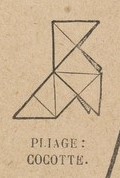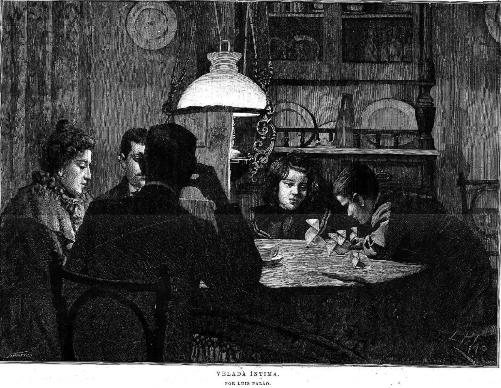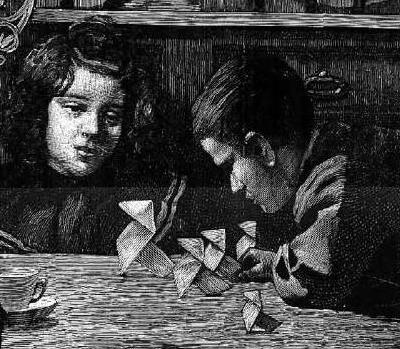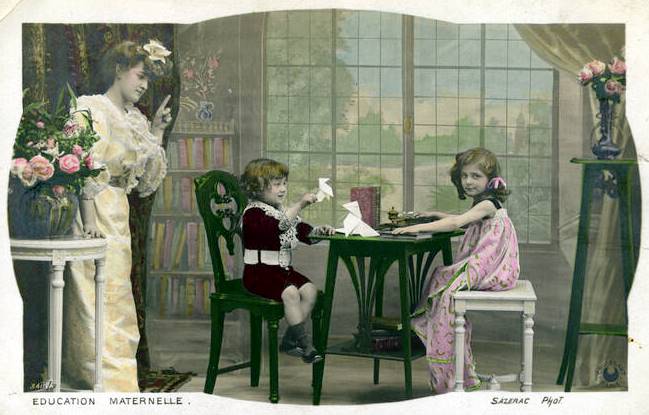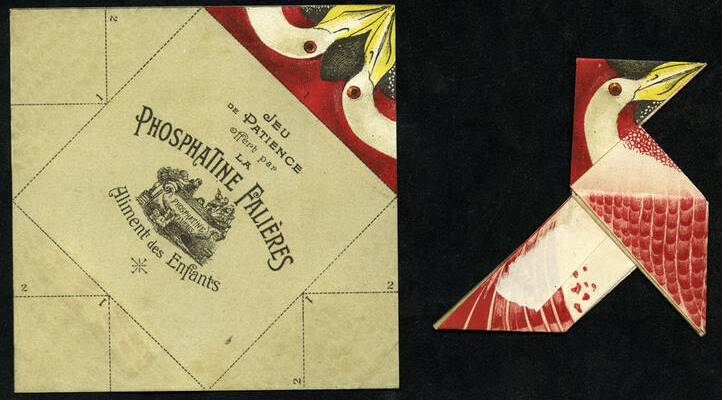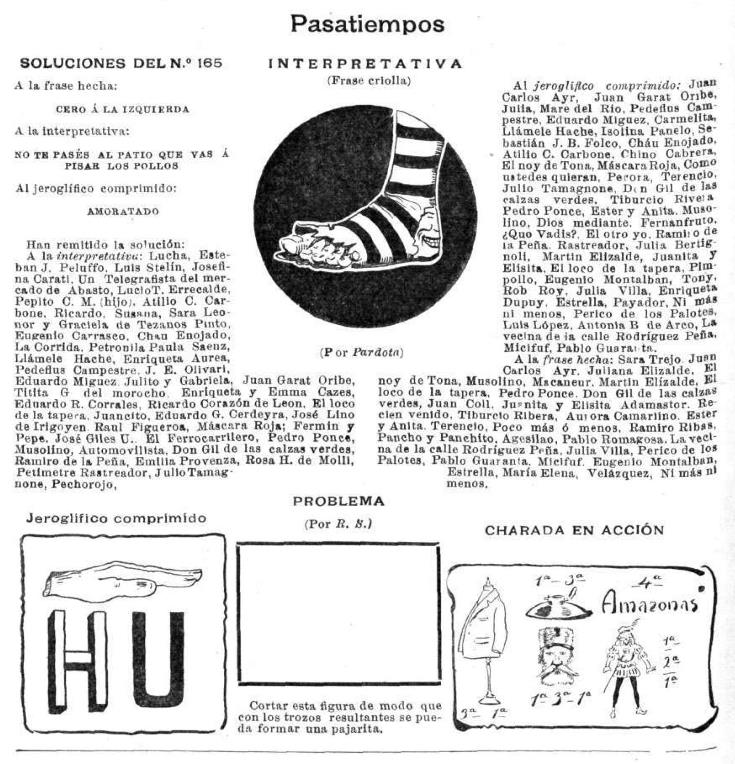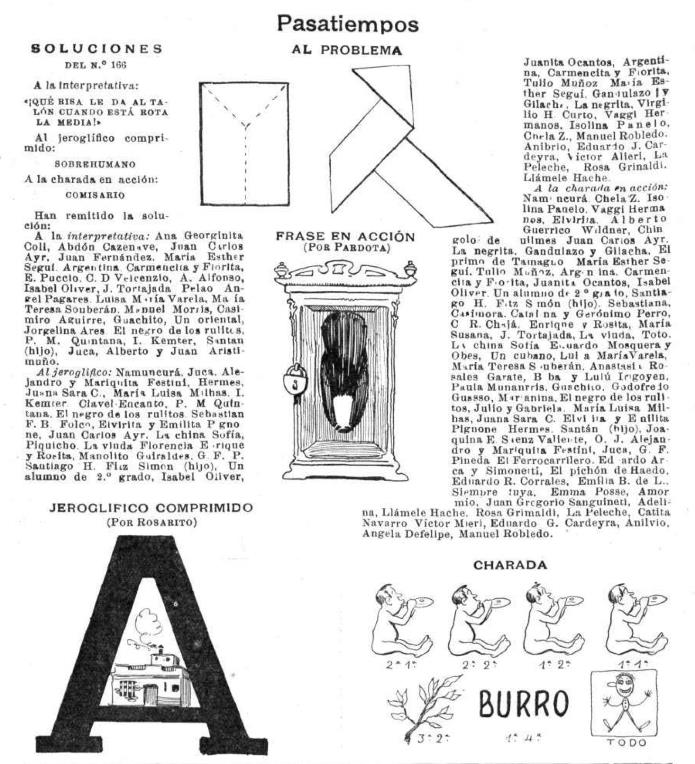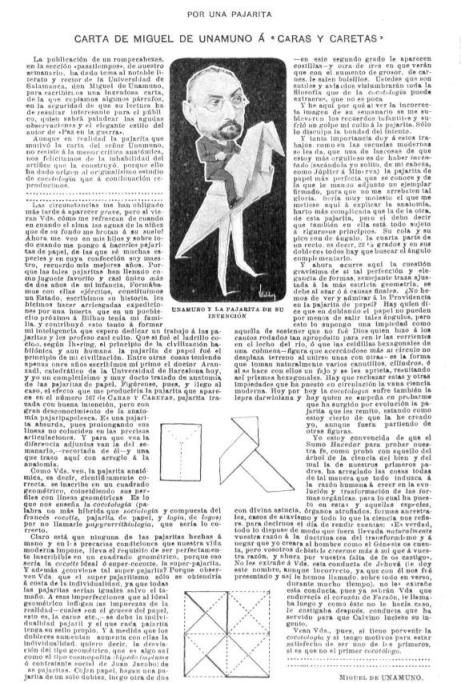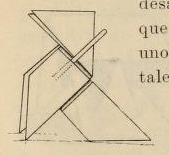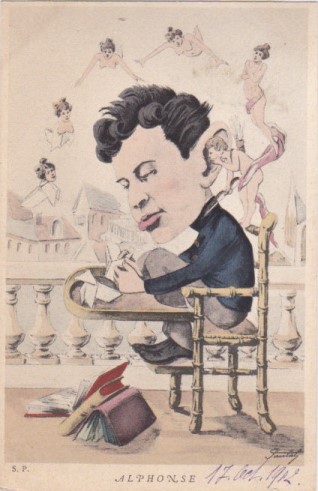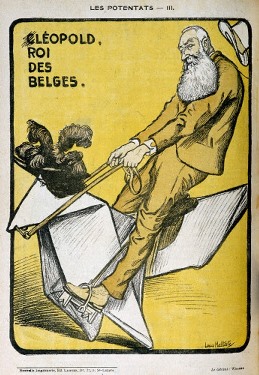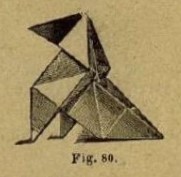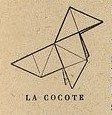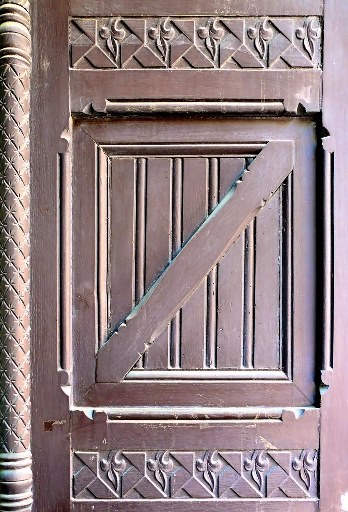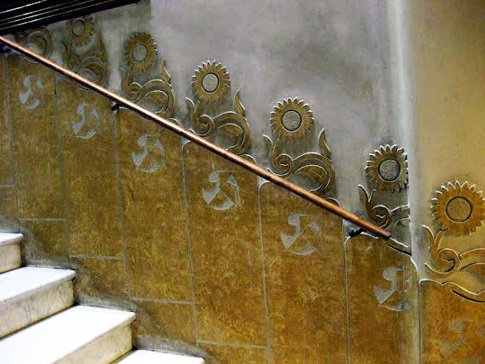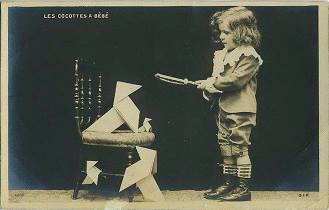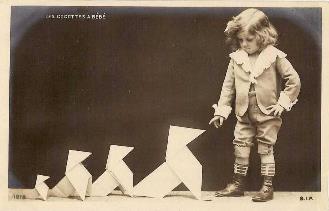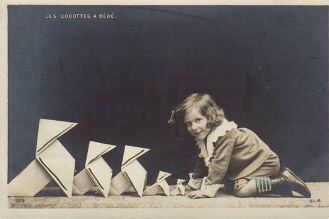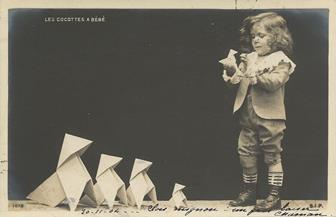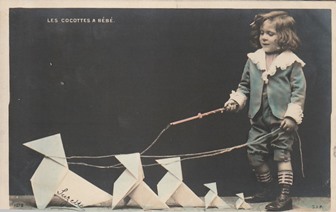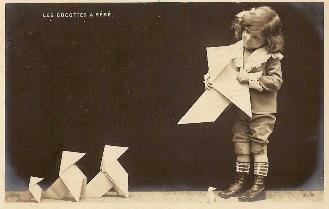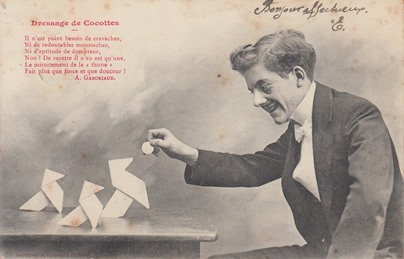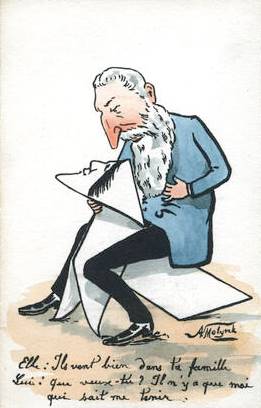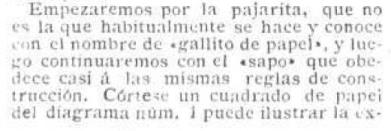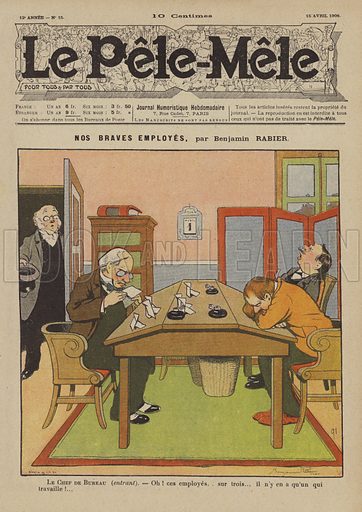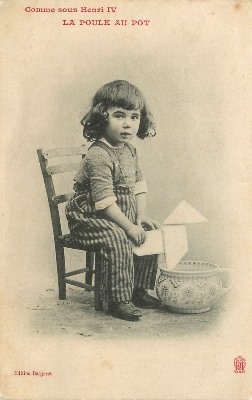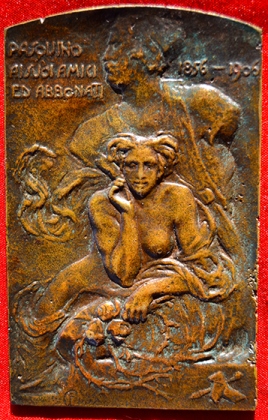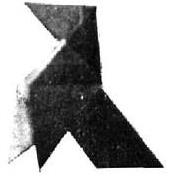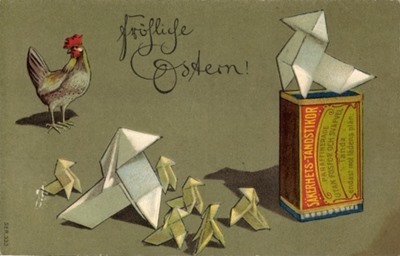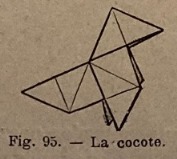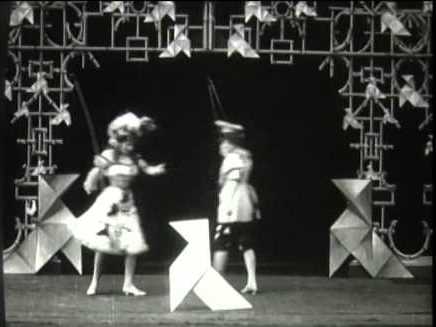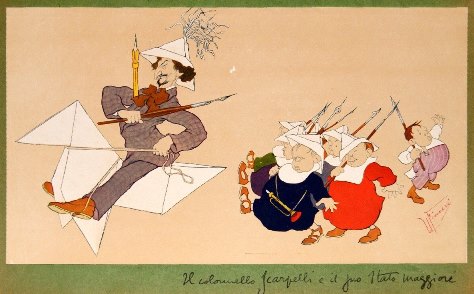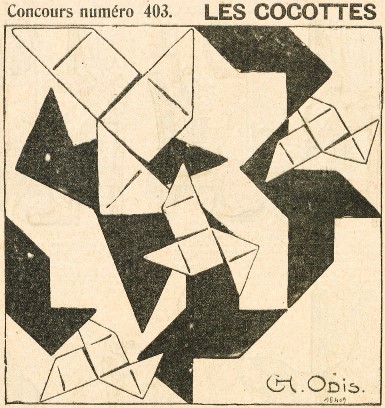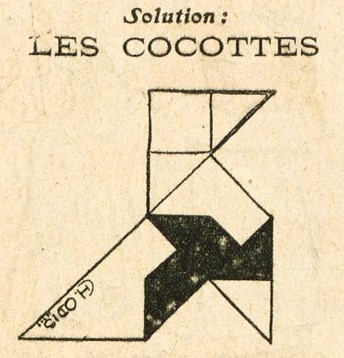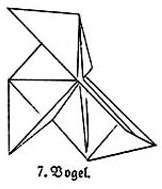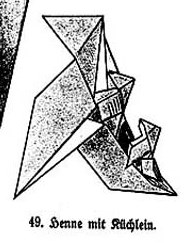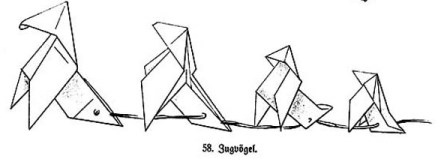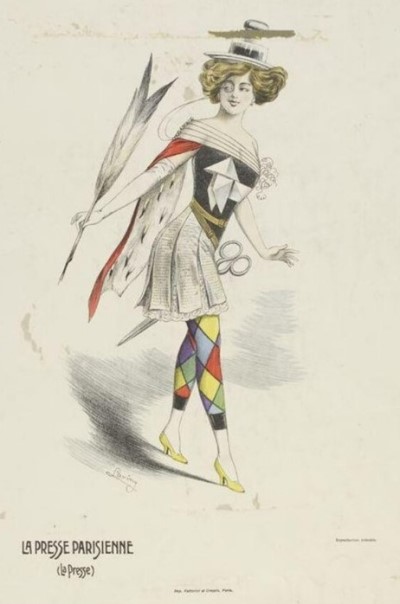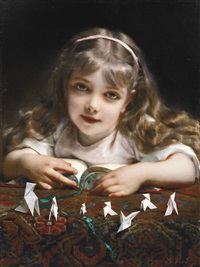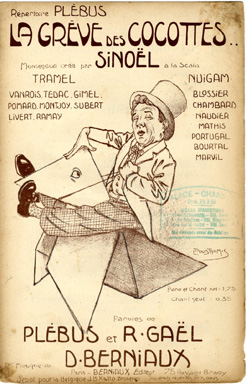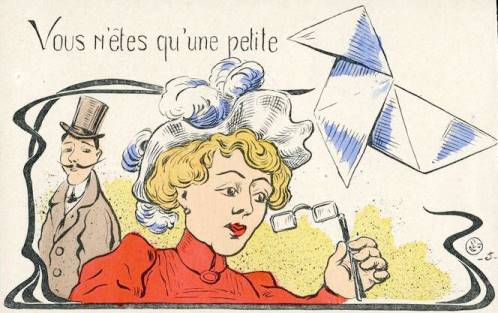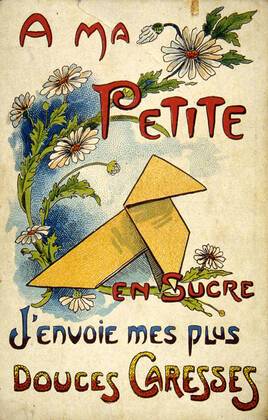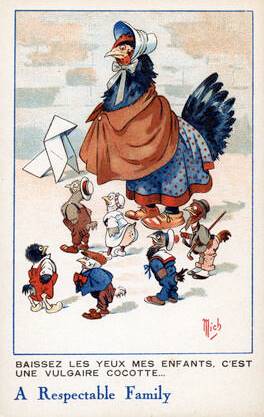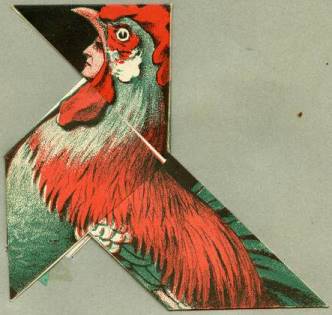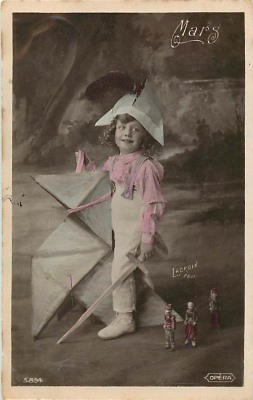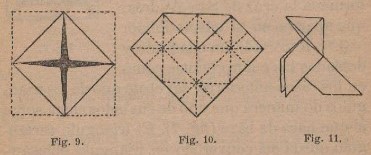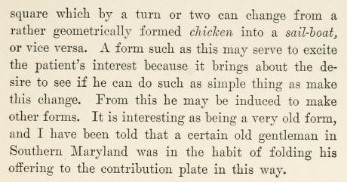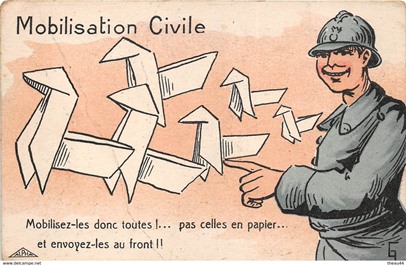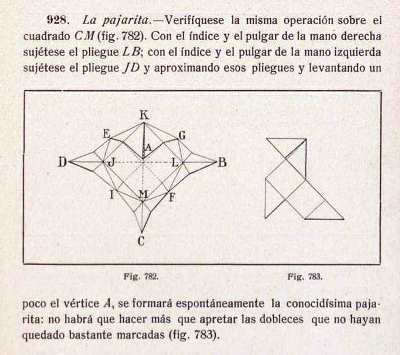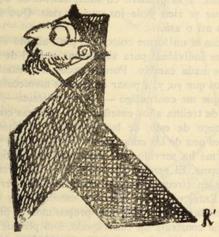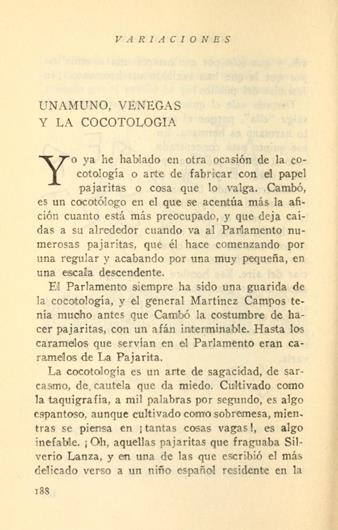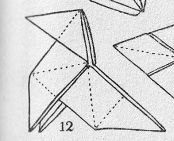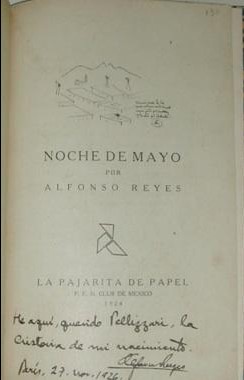| The Public Paperfolding History Project
Last updated 10/12/2025 x |
|||||||
| The Cocotte / Pajarita in Western Europe 1900 to 1924 | |||||||
This page is being used gto collect information about the history of the paperfolding design known as the Cocotte in French and the Pajarita in Spanish in Western Europe during the years 1900 to 1924. Please contact me if you know any of the information on his page is incorrect or if you have any other important information that should be added. Thank you. There are separate pages about the history of the Cocotte / Pajarita: An Introduction giving general information about this design can be found on the page relating to the years 1800 to 1849. ********** Chronology The design appears: 1900 As 'Pajarita' in an article in El Monitor 327 of 31st May 1900.
********** In 'Mes Jolie Jeux' by Henriette Suzanne Bres, which was published by Librairie Hachette in Paris in 1900.
********** In this engraving, entitled 'Velada Intima', which was printed in the issue of La Ilustración Española y Americana for 8th December 1900. Information from Juan Gimeno.
********** In this postcard, said to be from 1900, which shows a mother scolding her son for folding cocottes instead of doing his lessons.
********** 1901 In this advertising flyer for Phosphatine Falieres, said to date from 1901, folds into a Cocotte.
********** In issue 166 of the Buenos Aires edition of 'Caras y Caretas' for 7th December 190, which included a puzzle to cut a rectangle into pieces that when rearranged would form a Cocotte / Pajarita.
********** The solution was published in the following issue, no 167 of 14th December 1901.
********** 1902 In response to a misproportioned drawing of the Cocotte / Pajarita published in the December 1901 issue of the Buenos Aires edition of the magazine 'Caras y Caretas', Miguel de Unamuno wrote a letter to the Editor which was published, under the title of 'Por una Pajarita, in issue 178 of 1st March 1902. A full readable version of the article can be found here.
********** 'Apuntes para un tratado de cocotologia' (Notes for a Treatise on Cocotology) was published as an appendix to Miguel de Unamuno's novel 'Amor y Pedagogia' (Love and Pedagogy) by Henrich y Ca in Barcelona in 1902. The treatise is a whimsical, perhaps tongue-in-cheek / satirical, discussion of the Cocotte / Pajarita design attributed to Don Fulgencio, one of the main characters in the novel itself. Most of it seems to be deliberately obscure. The actual paperfolding content is restricted to a mention in passing of, and an illustration of, the traditional Table and a discussion of the ways in which Cocottes / Pajaritas with different characteristics can be achieved by blintzing the paper various numbers of times. Three variants are described. Adequate instructions for producing the designs are lacking but they can be worked out with a little fiddling around. 1, The basic Cocotte / Pajarita developed from a doubly blintzed square (or from a windmill base). 2, A smaller version developed from a triply blintzed square, which has 'two triangular bags' ie pockets, the openings for which are on top of its head. 3, A still smaller version developed from a quadruply blintzed square, which has a double-layered head (so that there are upper and lower parts to the beak) and pockets in the neck. Only this version is illustrated.
********** This satirical postcard from 1902 shows a child folding Cocottes / Pajaritas which then transform into a nymph whispering in his ear. The name Alphonse suggests this postcard was produced in France. However, Juan Gimeno has suggested that the child is in fact a representation of the young King Alfonso XIII of Spain, who was famed for his hectic extra-conjugal love life.
********** This postcard from 1902 is part of a set of ten which showed a child posing as an election candidate, in this case with Cocottes.
********** This caricature drawn by Louis Malteste (1862-1928) appeared on the back cover of the 9th March 1902 issue of the satirical magazine 'La Vie en Rose’. It shows Leopold II of Belgium riding a Cocotte. The crossed out 'C' that makes the name 'Cleopold' seems to be a reference to the ballet dancer Cleo de Mérode, who was rumoured to be his mistress.
********** As 'Pajarita' in 'Guia Practica del Trabajo Manual Educativo' by Ezequiel Solana, which was published by Editorial Magisterio Español in Madrid in 1902. The author notes, 'Among all the folding figures none is as well-known as this one. Rare is the child who does not know how to make it.'
********** 1903 In 'Mon Journal' of 21st February 1903
********** This door decorated with friezes of Pajaritas is from the modernist house 'Ca Guardiola' in Barcelona, designed by the architect Josep Codina i Clapé, which was built in 1903. Information from Juan Gimeno.
********** This staircase, which is decorated with Pajaritas, is part of the modernist house known variously as 'Casa Sababell' or 'Casa de la Dama' in Barcelona at Rambla del Prat 9. It was designed in 1904 by the architect Andreu Audet i Puig. Information from Juan Gimeno.
********** This set of six postcards titled 'Les Cocottes a Bebe' were in circulation in 1904.
********** This set of ten postcards featuring Cocottes were also in circulation in 1904. The sepia set is shown in full. Tinted green and red versions of at least one of the cards, and quite possibly all, were also in circulation.
Information from Juan Gimeno and Jaime Coll Guerrero ********** This postcard, titled 'Dressage de Cocottes' also dates from 1904.
********** These two postcards were also in circulation in and around 1904. Ma bourse et mon couer ...
*** Cocottes et Cocos
********** 1905 This postmark on this postcard dates it to 1905..
********** This postcard, drawn by A Molynk, is said to date from 1905. It shows King Leopold II of Belgium sitting on a Cocotte who may be intended to represent Cleo de Merode (see entry for 1902).
********** An article in Issue 238 of the Buenos Aires edition of the magazine 'Caras y Caretas', published on 25th March 1905, mentioned the Cocotte / Pajarita in passing under the name 'gallito de papel.'
Roughly, in English 'We will start with the pajarita, not the one normally known as the gallito de papel ...' The pajarita in question is in fact the Flapping Bird. ********** 1906 The cover illiustration of 'Le Pele-Mele' of 15th April 1906 features cocottes:
********** This Japanisme style print titled 'Composition jouets et branche fleurie' by Prosper Isaac dates from 1906.
********** This second postcard, also from 1906, contrasts 'Cocottes I used to like' with 'Cocottes I like now'.
********** This postcard was also in circulation in 1906.
********* A Cocotte was featured on the cover of the issue of 'La Gazette' for 4th March 1906.
********** This small metal plaque, which measures 8.5 x 5.3 cm, bears the legend 'Pasquino to his subscriber friends 1856 - 1906' and was presumably given to loyal subscibers of the satirical Italian magazine 'Il Pasquino', published in Turin, in 1906, the last year mentioned. There is a tiny image of a Pajarita / Cocotte in front of a stylus in the bottom left corner. Information from http://www.tuttilibriiomilibro.it/item/la-placchetta-del-pasquino/
********** 1907 The Pajarita features twice in an article titled 'El trabajo manual escolar' by Vicente Casto Legua in the January 1907 issue of the Spanish magazine 'La Escuela Moderna' which was published in Madrid by Los Sucesores de Hernando, once folded from a Windmill Base and once from a triple blintz fold.
********** This German postcard was in circulation in 1907.
********** 1908 Miguel de Unamuno's book 'Recuerdos de niñez y de mocedad' (Memories of childhood and youth) was published in 1908, but is largely made up of texts composed long before and published as individual articles in the magazine 'El Nervión' in Bilbao, between 1891 and 1892. It contains several passages describing how Don Miguel played with paper boats and birds as a child as well as this passage describing a strange and cruel way of animating a Cocotte / Pajarita using a fly: ********** The last ever issue of the Catalan satirical magazine 'La Campana Catalana', published in Barcelona on 29th April 1908, contained a cartoon by Apeles Mestres which pictures several Cocotte / Pajaritas among a a variety of other paperfolding designs. This pictorial story had previously been published in his Llibre Vert III in 1883.
The one on the left has a colour-change, possibly indicating that it has been folded from a windmill base. The one on the right has pockets beneath the head, indicating it has been folded from a triply blintzed square. It is, perhaps, possible that the one in the centre, which lacks a colour-change, should be read as being folded from a blintzed windmill base. ********** The Cocotte also appears, as 'La cocote' in 'Les Petits Secrets Amusants' by Alber-Graves, which was published by Librairie Hachette in Paris in 1908.
********** This image is a still taken from the short film 'Les Cocottes en Papier' by Segundo de Chomón which was made in 1908.
The whole film, which lasts close to six minutes, and features paper cocottes throughout, can be viewed on You Tube at https://www.youtube.com/watch?v=fOQzhR-S0o8 ********** This poster, also from 1908, was used to advertise the film. Information from Juan Gimeno.
********** This drawing by Ugo Finozzi, titled 'Colonel Scarpelli and his General Staff' was published in the 1908 Christmas album of the Italian (Florentine) children's magazine 'Giornalino della Domenica'.
********** 1908 The 'Supplément illustré' of the issue of 'Mémorial d'Amiens et du département de la Somme, for 12th July 1908 contained a puzzle to be solved by cutting out and folding a decorated square. It is likely hat it was also published in other regional journals at a similar time.
********** The solution was published in the issue for 30th August 1908.
********** 1910 The design appears as 'Vogel', and in other guises, in Part 2 'Das Flechten' of 'Die Frobelschen Beschaftigungen' by Marie Muller-Wunderlich, which was published by Friedrich Brandstetter in Leipzig in 1910.
*** Henne mit Küchlein (hen with chicks)
*** Zugvögel (migratory birds).
********** As 'Vogel' in 'Allerlei Papierarbeiten' by Hildergard Gierke and Alice Kuczynski, which was published by Drud und Verlag B G Teubner in Leipzig and Berlin in 1910.
********** This caricature said to be from c1910 is said to represent Comte Bertand de Valon with his mistresses.
********** This print is one of a series of 18 by Laviny published in Paris c 1910 which are in the collection of the Victoria and Albert Museum. It depicts a woman dressed to represent the 'La Presse Parisienne'.
********** This postcard featuring a 'Coq et Cocotte' dates from 1910.
********** A painting depicting Cocottes, by the french painter Étienne-Adolphe Piot (1850-1910), and titled 'A young girl with origami birds', (though that cannot be the original title since the word origami would not have been in use in Europe during his lifetime) appeared in a catalogue for a sale at Sotheby’s auction house in early 2017. I do not know what year this picture was painted.
********** This illustrated sheet music cover dates to 1910. (Information from Michel Grand.)
********** These three postcards are said to date from 1910.
********** This advertising flyer which folds into a Cocotte, is said to be for a bookseller, after the work of Rostand (1868-1918), and to date from 1910.
********** 1911 This New Year greetings postcard, which features Cocottes / Pajaritas in the background, was in circulation in 1911.
********** As was this tinted postcard of a girl in a Newspaper Hat riding a Cocotte /Pajarita.
********** 1912 The cover illustration of the issue of the French children's magazine 'Mon Journal' for 6th January 1912 includes a lampshade decorated with Cocottes.
********** 1914 As 'La pajarita' in 'El Trabajo Manual en la Escuela' by Félix Martí Alpera, which was published by Libreria de los Sucesores de Hernando in Madrid in 1914.
********** 1915 'Occupational Therapy: A Manual for Nurses' by William Rush Dunton, which was published by the W B Saunders Company in Philadelphia and London in 1915, contains instructions for folding a 'chicken' and turning it into a 'sail-boat'.
********** 1917 This postcard by the illustrator GriFF is known to have been in circulation in 1917. (Information from Michel Grand.) It parodies the Mobilisation Generale ordered by the French government in 1914, seeming to suggesting that prostitutes should be sent to the front, and so possibly dates from that time.
********** 1918 An unusual way of making 'La Pajarita' can be found in 'Ciencia Recreativa' by Jose Estralella, which was published by Gustavo Gili in Barcelona in 1918.
********** As 'La Pajarita' in 'Juguetes de Papel', which was published by Editorial Muntanola in Barcelona 1918. The instructions are not entirely clear but the design appears to be developed from a doubly blintzed square (or possibly a triply blintzed square).
********** 1922 'Varaciones' by Ramon Gomez de la Serna, which was published in 1922 by Publicaciones Atenea in Madrid, contains an essay titled 'Unamuno, Venegas y la cocotologia' which is mostly an account of an interview with Miguel de Unamuno about cocotologia. It also contgains this famous cartoon of Unamuno as a Cocotte / Pajarita ...
The opening paragraphs throw some interesting light on how far the folding of pajaritas had become part of Spanish culture at this date:
Roughly translated they say: 'I have already spoken on another occasion about cocotology or the art of making bow ties with paper. Cambó is a cocotologist in whom the hobby is accentuated the more he is worried, and who leaves many pajaritas around him when he goes to Parliament, which he makes starting with a regular one and ending with a very small one, in a descending scale. Parliament has always been a den of cocotology, and General Martínez Campos had long before Cambó the custom of making pajaritas, with an endless eagerness. Even the candies that were served in Parliament were La Pajarita candies. Cocotology is an art of sagacity, of sarcasm, of fearful caution. Cultivated like shorthand, at a thousand words per second, it's a dreadful thing, although cultivated as an after-dinner, mien. after thinking of so many vague things, it is something ineffable. ; Oh, those pajaritas that Sil Mario Lanza forged, and in one of which he wrote the most delicate verse to a Spanish child living in the Argentina, to the son of Más y Pi, that good friend of ours who was shipwrecked!' Cambo is Francesc Cambó i Batlle (1876 – 1947). I do not know who Sil Mario Lanza was. Mas y Pi is presumably Juan Mas y Pi (1878 - 1916). ********** 1923 As 'La Pajarita' in 'Trabajos Manuales y Juegos Infantiles' by Francisco Blanch, which was published by I. G. Seix y Barral Hermanos S.A.- Editores in Barcelona in 1923. Note that this version is folded from a square.
********** 1924 On the first of June 1924, the PEN Club of Mexico organized a meal in honour of Alfonso Reyes Ochoa at which his poem "Noche de Mayo" was distributed as a 'Pajarita de Papel' (ie a printed flyer) that featured a drawing of a Cocotte / Pajarita.
********** This postcard feature a Cocotte on a float during the 1924 Carnaval de Nice.
********** |
|||||||

